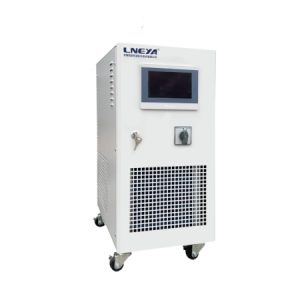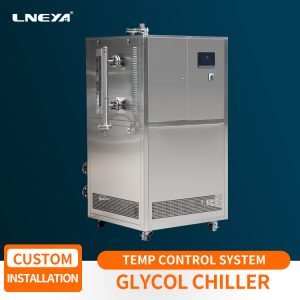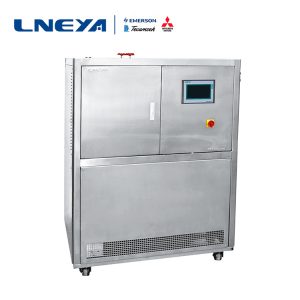Scanning Electron Microscope Cooling Water Circulation System
Scanning Electron Microscope (SEM) is a high-resolution microscope widely used in materials science, biology, nanotechnology and other fields. SEM generates a certain amount of heat during operation. In order to ensure the stable operation and image quality of the microscope, an efficient cooling water circulation system is required to control the temperature inside the SEM.
The following are the key components and working principles of the cooling water circulation system of the scanning electron microscope: Key components:
- Circulation pump: responsible for promoting the circulation of cooling water in the system to ensure that the cooling water can flow evenly through various cooling points inside the SEM.
- Cooling water tank: stores cooling water, usually contains filters and chemical additives to maintain the purity of cooling water and prevent corrosion.
- Heat exchanger: transfers the heat in the cooling water to the external cooling medium (usually air or water) through the heat exchanger to achieve the purpose of cooling.
- Temperature controller: monitors the temperature of the cooling water and adjusts the temperature of the cooling water through automatic control systems such as PID controllers to ensure that it is stable within the set temperature range.
- Filter: Filter impurities in cooling water to prevent clogging of the cooling system.
- Pipes and valves: Connect various components to ensure that cooling water can circulate smoothly.
Working principle:
- Cooling water circulation: Cooling water flows out of the cooling water tank and enters the cooling channel or cooling plate inside the SEM through the circulation pump to absorb the heat generated inside the SEM.
- Heat exchange: The cooling water that has absorbed heat then flows into the heat exchanger, where the heat is transferred to the external cooling medium through the heat exchanger to achieve cooling of the cooling water.
- Temperature control: The temperature controller continuously monitors the temperature of the cooling water and adjusts the speed of the circulation pump, the flow rate of the cooling water or the working state of the heat exchanger as needed to keep the temperature of the cooling water stable within the set range.
- Circulation reflux: The cooled cooling water returns to the cooling water tank again to prepare for the next cycle.
- Filtration and maintenance: After a period of use, the cooling water needs to be filtered to remove impurities, and the cooling water and chemical additives need to be replaced regularly to keep the system clean and efficient.
Key requirements:
- Temperature control accuracy: It is usually necessary to control the temperature of the cooling water within the range of ±0.5°C to ±1°C to ensure the stability of the temperature inside the SEM.
- Circulation efficiency: Ensure that the cooling water can circulate efficiently to avoid local overheating. • Safety and protection: The system should have safety measures such as over-temperature protection and pressure protection to ensure the safe operation of the equipment.
- Low noise: The circulation pump and heat exchanger should reduce noise as much as possible to avoid interference with the operation of the SEM.
- Maintenance convenience: The design should be easy to maintain and clean to ensure long-term stable operation.
In summary, the cooling water circulation system of the scanning electron microscope ensures the stability of the temperature inside the SEM by accurately controlling the temperature of the cooling water, thereby improving the imaging quality and stability of the microscope.
Raccomandazioni correlate
-
What instruments in biopharmaceutical processes require cooling water systems?
826In biopharmaceutical processes, many critical equipment and instruments require cooling water systems to maintain their normal operation and process temperature control. The following are some common types of equipment that require cooling w...
Visualizza i dettagli -
What tests are used by cooling water chillers for new energy enterprises?
905In the process of product development, production and quality control, new energy enterprises will use cooling water chillers to perform a variety of tests. Cooling water chillers play an important role in these tests to ensure the perform...
Visualizza i dettagli -
Unità di refrigerazione Refrigeratore ad acqua
761Il sistema di raffreddamento ad acqua del refrigeratore è una soluzione di raffreddamento efficiente che rimuove il calore facendo circolare l'acqua di raffreddamento. Questo sistema è ampiamente utilizzato in ambienti industriali, di laboratorio e commerciali, soprattutto in applicazioni che richiedono...
Visualizza i dettagli -
Quali sono gli interventi di manutenzione dei refrigeratori a glicole nel funzionamento quotidiano?
1172Nel funzionamento quotidiano del refrigeratore di glicole, se non viene effettuata la manutenzione, l'effetto di raffreddamento sarà ridotto. Pertanto, per migliorare l'efficienza operativa, si consiglia di eseguire la necessaria manutenzione quotidiana. Refrigeratore...
Visualizza i dettagli -
Informazioni sulle istruzioni per la selezione del refrigerante delle macchine a ciclo ad alta e bassa temperatura
1099In the operation of high and low temperature cycle machines, the presence of refrigerant is essential, and the environmentally friendly mixed refrigerant used by LNEYA is better in terms of performance. The high and low temperature cycle machine h...
Visualizza i dettagli -
-
Usage Details of High and Low Temperature Environmental Chambers
1049The enterprise users must have a certain understanding of the functions of the high and low-temperature environmental chamber after using them for a long time, but something detail of the high and low-temperature environmental chamber may still no...
Visualizza i dettagli
 Refrigeratori industriali LNEYA Produttore Fornitore
Refrigeratori industriali LNEYA Produttore Fornitore














